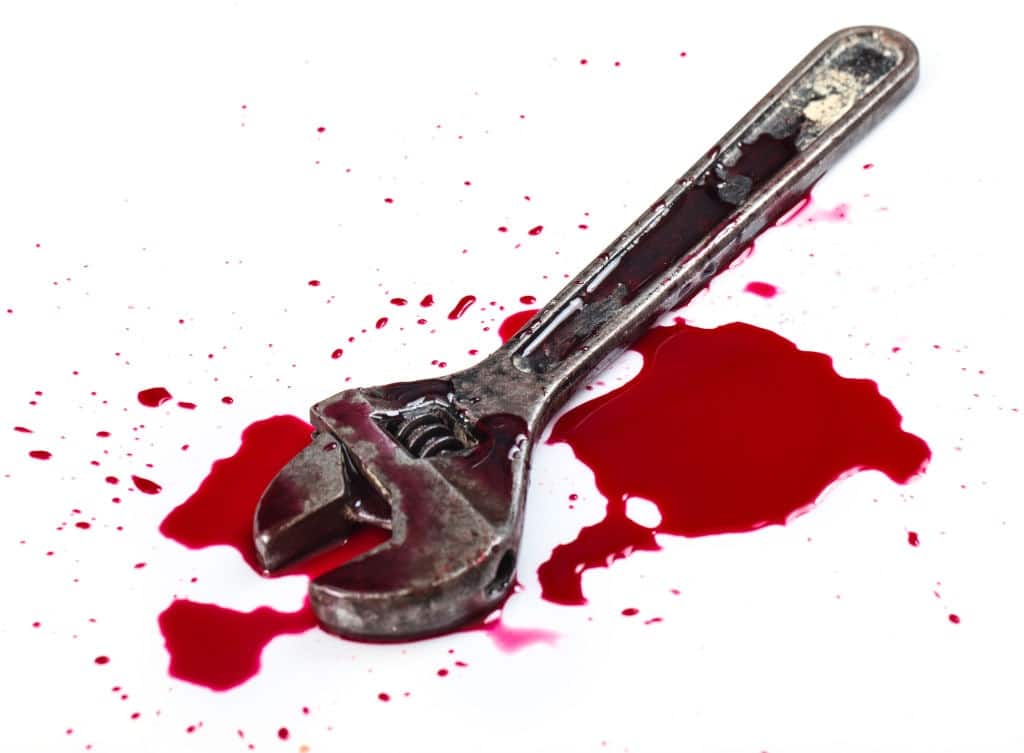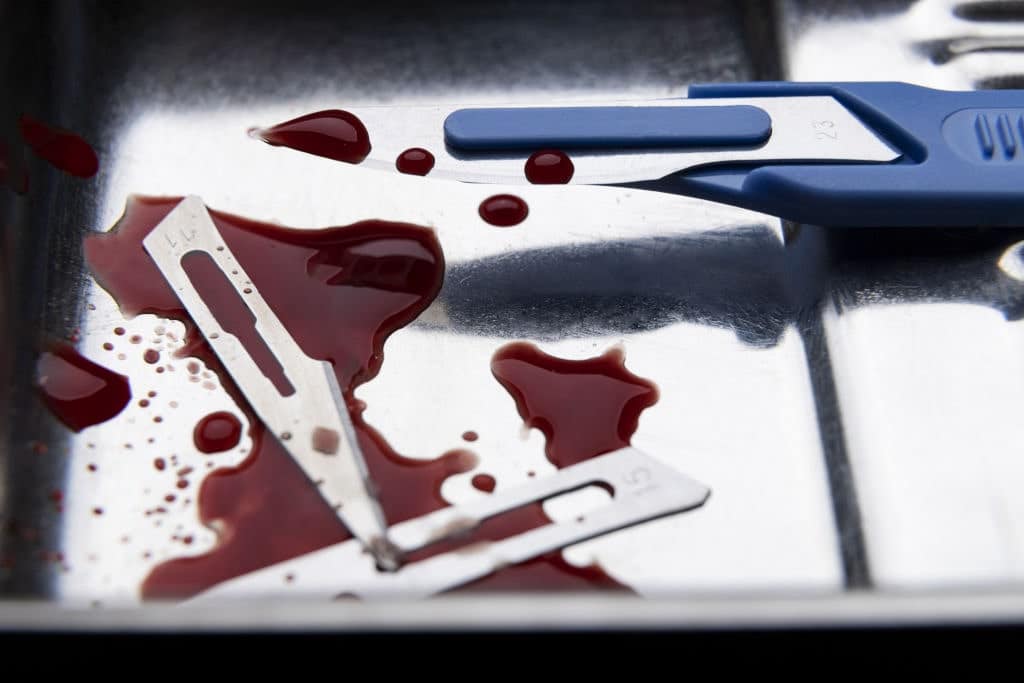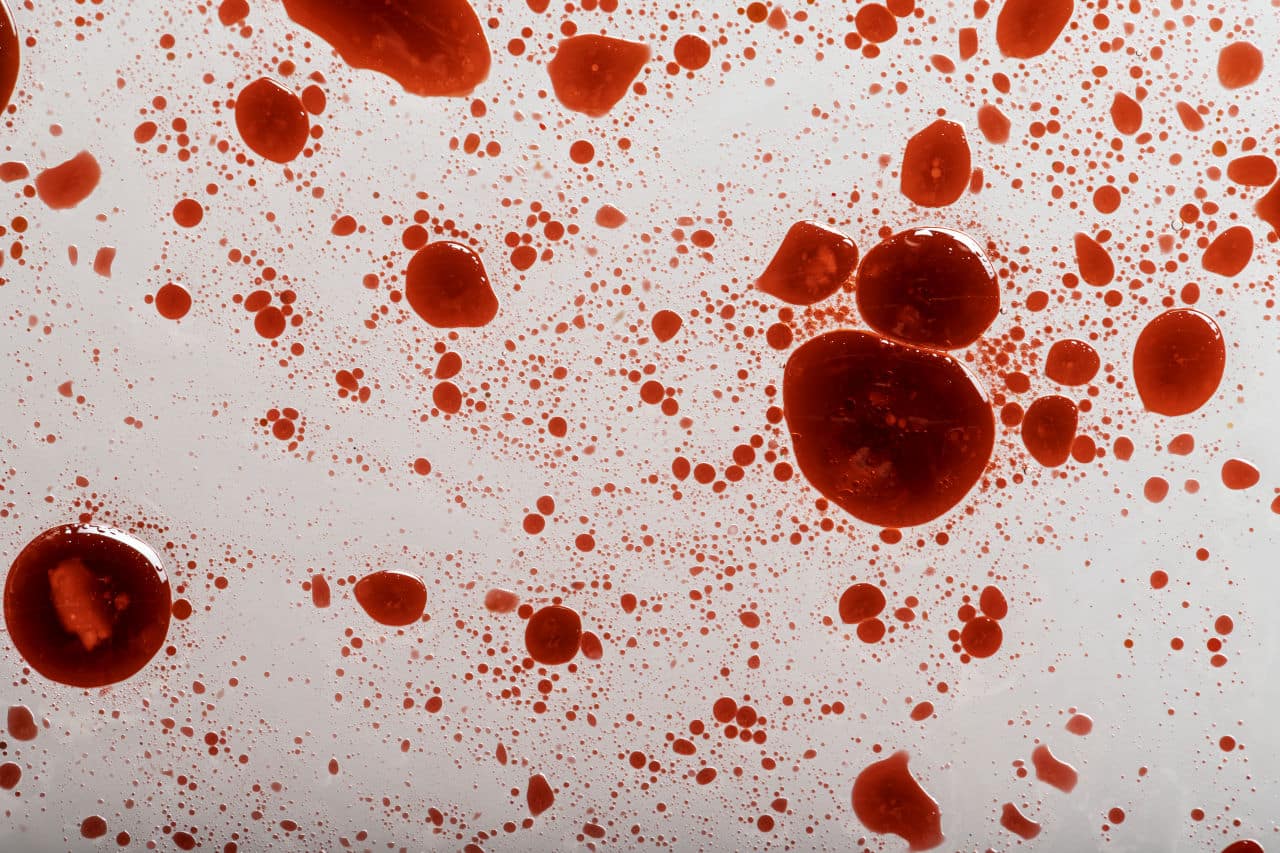Bloodstain pattern analysis is one of the “strange unpopular things” we’ve seen in crime scenes. It’s no doubt that we may have all come upon a crime scene in a movie series. Instead of forensic experts and investigators doing practical things like taking snapshots and collecting fingerprints and hair fibers, they do something else we only consider strange.
You see them lining an array of red strings. Most times, running from the wall to the floor, table, or sofa, all intersecting at one point over a bloodstain. Before you can fully comprehend the meaning of this odd tendency, the investigator starts recounting some aspects of the crime that they did not even witness. This is usually referred to as “bloodstain pattern analysis.”
Right there and then, the investigator begins to give a rundown of the time of the incident. They talk about the exact place it happened and the kind of weapon used. Some even go further to describe the closeness of the assailant and the victim during the incidents and many more jarring details.
All these can be even more bizarre, given that there’s just a web of string on the floor and no CCTV capture of the event.
So, how do they do it?
Well, it’s a tool in the branch of forensics known as “bloodstain pattern analysis.” The strings themselves are not the ultimate answer. Analysts use tools to draw conclusions from the blood splattered on the floor.
This is not like DNA testing. It is more like detecting facts from a crime scene via blood pattern. They take a deeper look at how the blood landed, where it landed, the size and shape of droplets or splatter, and its consistency.
All of these factors work together to provide unmistakable evidence of violent crimes involving bloodshed.
What Is The Process of Bloodstain Pattern Analysis?
Essentially, bloodstain pattern analysis (BPA) is the process of investigating bloodstains from a crime scene. It involves analyzing their size, shape, and distribution patterns using forensic methods.
Pattern Analysis
When there is bloodshed during a crime, the blood left behind serves as evidence for law enforcement.
However, a bloodstain pattern analyzer cannot identify the who, what, and when of a crime scene by only looking at drips and streaks of blood. They support other information and prompt detectives to look for further hints.
Blood splatters can reveal significant clues regarding the details of the violent act. This includes weaponry type, blood flow velocity, number of blows, victim and attacker positions and movements throughout and after the attack, which wounds were inflicted first, the type of injuries when the crime occurred, and if death was immediate or delayed.
An example is seen in the case of State v. Hall. The bloodstain analyst was able to establish a fact through analysis of the bloodstains and examination of the knife and clothing fibers on the scene. It was shown that the defendant was not a mere passerby but had, in fact, stabbed the victim.

The Scientific Basis of Bloodstain Analysis
The same rules of velocity, gravity, physics, and chemistry that apply to all liquids also apply to blood spatters, guiding the recreation of a crime.
Due to surface tension, which is the tendency of fluids to reduce their surface area due to their molecules’ attraction to one another, blood travels in spherical drops. Furthermore, when its drops come into contact with a surface or are subjected to a force, they respond in predictable ways.
Think about what transpires when water is spilled. A puddle is formed when the liquid hits the ground. The volume of liquid, the height from which it fell, and whether it landed all affect its shape and size.
This calculation was exemplified in the case of Commonwealth v. Powell. The defendant was held liable for a murder based on a splatter stain on his jeans, jacket, and boot. The splatter stain shows that he was in close proximity when the victim was being assaulted.
What Happens When Blood Clots?
Another factor to remember is that blood dries out over time. The stain’s outside borders typically dry first. Therefore, a dried blood splatter can be skeletonized. This is after the interior piece flakes off or is spread by an object. Hence, leaving behind a ring resembling a water ring on a table.
Analysts can use drying patterns to estimate how long an assault lasted, establish if it happened at once or in phases, and identify any potential crime scene contamination.
Similar information can be found in blood clotting patterns. This can help determine when analysts arrive at the scene before the blood is dried.
Clotting typically starts within three to fifteen minutes. However, exact timings depend on blood quantity, surface type, and atmosphere. Mixed amounts of clotting may be a sign that there were several blows or rounds fired over time.

How Does 3D Forensic Animation Aid Bloodstain Pattern Analysis?
The use of 3D forensic animation to portray the findings of a bloodstain pattern analysis cannot be overemphasized.
Essentially, the bloodstain pattern is a method in forensic science to reconstruct the incidents of a violent crime. Consequently, a fully reconstructed crime scene is born in collaboration with other aspects of forensics, such as DNA testing or analysis of some fibers.
What is left now would be the illustration of this scientifically backed reconstruction with a forensic animation. With the help of 3D forensic animation, it would be easier to portray the analyzed event in a lifelike and relatable forum.
The essentiality of using 3D modeling to depict bloodstain pattern analysis has also been backed by studies since it proved beneficial in documenting the crime scene.
It also helps shed more light on the analysis. An expert droning on and on about some theoretical concepts may be difficult for the court to comprehend.
Therefore, when creating 3D forensic animation of bloodstain pattern analysis, it is essential that only experts be involved. This is because accuracy is the basis for its admissibility. Once the accuracy of the depiction is flawed, the piece of demonstrative aid will be rendered inadmissible.
With Fox-AE, there is a certainty of accuracy, attention to detail, a forensic outlook, and quality 3D forensic animation. We have a team of forensic animators with knowledge and experience in reading forensic findings. They can transform these into detailed animations.
In conclusion, forensic science has done a world of good for the violent crime department. The use of 3D forensic animation has also moved the portrayal of this evidence to a whole new level in court. With help of our forensic animator, bringing a bloodstain analysis to life would be much easier.






